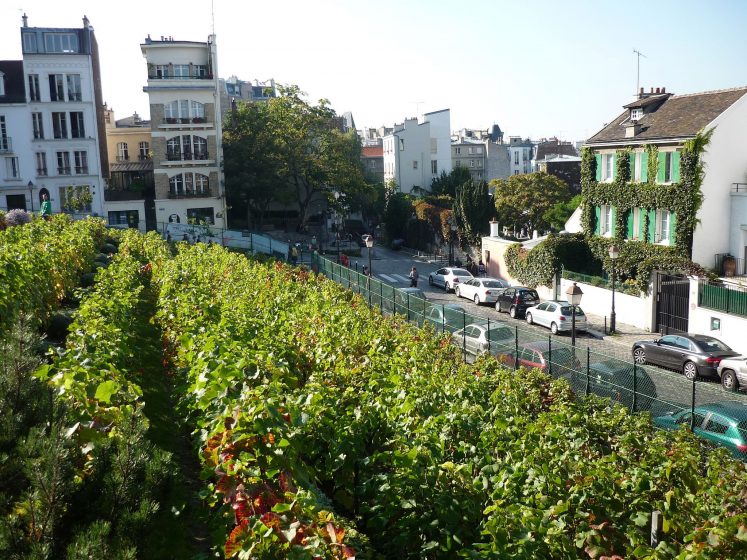Our City Blooming Diaries
Our City Blooming Diaries
Blog Article
The Definitive Guide for City Blooming
Table of ContentsThe Best Guide To City BloomingCity Blooming Can Be Fun For EveryoneCity Blooming Things To Know Before You Get ThisThe Ultimate Guide To City BloomingWhat Does City Blooming Do?
Intrigued in growing food for sale in the City of Chicago? Below is a listing of regularly asked inquiries relating to the rules and guidelines that growers ought to think about when intending a city farming task.
The zoning change does not modify any other codes managing composting, building permits, buying or renting City had home, business licenses or environmental contamination. There are existing codes that manage these concerns and they stay in full impact and might be appropriate to your task. Area yards are commonly had or taken care of by public entities, public organizations or community-based companies and preserved by volunteers.
Urban farms expand food that is planned to be sold, either on a not-for-profit or for-profit basis. Because of their business purpose, city farms call for a business certificate. Yes. A neighborhood yard is enabled to sell surplus produce that was expanded on website if the sales are accessory or secondary to the yard's primary objective described over.
A Biased View of City Blooming
Composting is permitted yet just for plant product that is created and used on site. The amount of compost material can not go beyond 25 cubic yards at any type of provided time according to the standards in 7-28-715 of the City's Municipal Code. Yes. Due to the fact that the dirt at many new yard websites requires amending, compost, soil, wood chips, or other materials can be acquired to construct or enhance the expanding space - City gardening.

If a structure license is called for then the hoophouse will be considered an accessory building. You can find out even more about the structure authorization demands by getting in touch with the Department of Buildings. The 25,000-square-foot dimension limitation is intended to avoid a solitary area garden from dominating a provided block or diminishing the block's existing residential or industrial character.
The restriction does not put on gardens situated in Public Open Room (POS) districts. Can there be greater than one community yard that is 25,000 square feet on a solitary block? Yes. The size restriction puts on private yards, not to private blocks. No. Fence is not called for, nevertheless, gardens that have big car park locations might be required to mount secure fencing or other landscaping features.
Indicators on City Blooming You Need To Know
B1 & B2 areas require that all industrial use tasks be performed inside your home. R districts limit industrial activity. The policies mirror the function and intent of the Zoning Code. Is fence needed for urban ranches? Yes. Fencings may be required, together with landscape design and screening, for sure car parking areas and outside job or storage space areas relying on place and the details task taking location.
Yes. Urban farms call for structure authorizations and zoning authorizations prior to building. Various other types of city evaluation may be needed depending upon specific structures, tasks, dimension, landscaping, licensing, public heath and stormwater administration concerns. A lot of these needs are determined in the job layout or allowing procedure, nevertheless, the applicant may be liable to individually determine particular licenses or allows that might be required.
The Department of Organization Matters and Consumer Protection can help identify the certain type of business certificate that's called for. Off road vehicle parking is needed for the majority of business tasks in Chicago. The required number of car parking areas is based on the number of staff members working on site and not the square video of the expanding space.
Unknown Facts About City Blooming

Yes. A metropolitan ranch can market garden compost material produced on site, nevertheless, the procedure needs to abide by the guidelines in 7-28-715 of the Chicago Municipal Code. Yes. Aquaponic systems are permitted indoors on metropolitan ranches in several zoning districts. Nevertheless, a zoning review and structure license is needed in order to install structures or you can try these out systems and a company permit is called for as explained over.
Up to 5 hives or swarms of honey may be kept as an accessory use. Nonetheless, beekeepers should sign up with the Illinois Department of Agriculture. For more details concerning the proposed zoning amendment you may contact the Division of Housing and Economic Growth, Bureau of Planning and Zoning at 312.744.8563.
Farming in cities and urban areas A metropolitan farm in Chicago. Urban farming refers to numerous techniques of cultivating. https://worldcosplay.net/member/1784867, handling, and dispersing food in metropolitan locations. The term also puts on the location activities of pet husbandry, aquaculture, beekeeping, and cultivation in a city context. Urban farming is distinguished from peri-urban agriculture, which happens in backwoods at the side of suburbs.
The Ultimate Guide To City Blooming
It can involve a movement of organic farmers, "foodies" and "locavores", that seek to create social networks based on a common principles of nature and neighborhood holism. These networks can establish by means of formal institutional assistance, coming to be integrated into regional town as a "shift community" activity for sustainable city growth.
In either situation, the more straight accessibility to fresh veggie, fruit, and meat products that may be understood with city agriculture can improve food security and food safety and security while lowering food miles, leading to reduced greenhouse gas discharges, therefore adding to environment change reduction. A few of the first evidence of urban agriculture comes from Mesopotamia.
Report this page